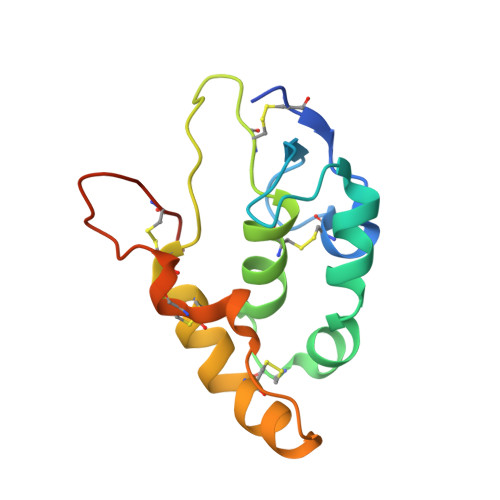Surrogate Wnt agonists that phenocopy canonical Wnt and beta-catenin signalling.
Janda, C.Y., Dang, L.T., You, C., Chang, J., de Lau, W., Zhong, Z.A., Yan, K.S., Marecic, O., Siepe, D., Li, X., Moody, J.D., Williams, B.O., Clevers, H., Piehler, J., Baker, D., Kuo, C.J., Garcia, K.C.(2017) Nature 545: 234-237
- PubMed: 28467818
- DOI: https://doi.org/10.1038/nature22306
- Primary Citation of Related Structures:
5UN5, 5UN6 - PubMed Abstract:
Wnt proteins modulate cell proliferation and differentiation and the self-renewal of stem cells by inducing β-catenin-dependent signalling through the Wnt receptor frizzled (FZD) and the co-receptors LRP5 and LRP6 to regulate cell fate decisions and the growth and repair of several tissues. The 19 mammalian Wnt proteins are cross-reactive with the 10 FZD receptors, and this has complicated the attribution of distinct biological functions to specific FZD and Wnt subtype interactions. Furthermore, Wnt proteins are modified post-translationally by palmitoylation, which is essential for their secretion, function and interaction with FZD receptors. As a result of their acylation, Wnt proteins are very hydrophobic and require detergents for purification, which presents major obstacles to the preparation and application of recombinant Wnt proteins. This hydrophobicity has hindered the determination of the molecular mechanisms of Wnt signalling activation and the functional importance of FZD subtypes, and the use of Wnt proteins as therapeutic agents. Here we develop surrogate Wnt agonists, water-soluble FZD-LRP5/LRP6 heterodimerizers, with FZD5/FZD8-specific and broadly FZD-reactive binding domains. Similar to WNT3A, these Wnt agonists elicit a characteristic β-catenin signalling response in a FZD-selective fashion, enhance the osteogenic lineage commitment of primary mouse and human mesenchymal stem cells, and support the growth of a broad range of primary human organoid cultures. In addition, the surrogates can be systemically expressed and exhibit Wnt activity in vivo in the mouse liver, regulating metabolic liver zonation and promoting hepatocyte proliferation, resulting in hepatomegaly. These surrogates demonstrate that canonical Wnt signalling can be activated by bi-specific ligands that induce receptor heterodimerization. Furthermore, these easily produced, non-lipidated Wnt surrogate agonists facilitate functional studies of Wnt signalling and the exploration of Wnt agonists for translational applications in regenerative medicine.
Organizational Affiliation:
Department of Molecular and Cellular Physiology, Howard Hughes Medical Institute, and Department of Structural Biology, Stanford University School of Medicine, Stanford, California 94305, USA.















